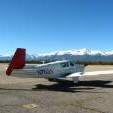Can anyone share a picture of their installed Alternator wiring?
-
Members Online
- boldt35
- RightrudderM20E
- Marc_B
- Dwb62
- Alan Maurer
- DonMuncy
- AgFlyer
- AndreiC
- IvanP
- TCC
- skykrawler
- 47U
- chrisburdzy98
- Flyler
- takair
- M20F
- 201Steve
- varlajo
- mmcdaniel33
- StParkin
- EKoS
- Parker_Woodruff
- Aerodon
- Lumberg
- mgtrevor
- M Terry
- Utah20Gflyer
- natdm
- DXB
- N201MKTurbo
- exM20K
- Rwsavory
- Mooney in Oz
- Scottknoll
- pirate
- Fly Boomer
- Pinecone
- podair
- MikeOH


Recommended Posts
Join the conversation
You can post now and register later. If you have an account, sign in now to post with your account.